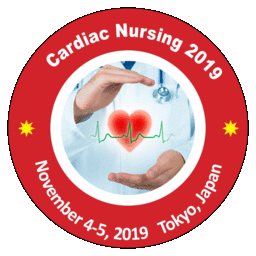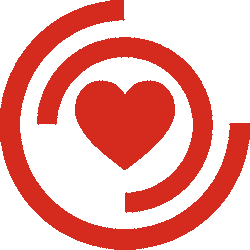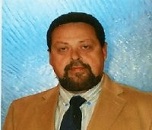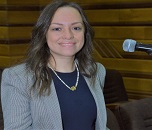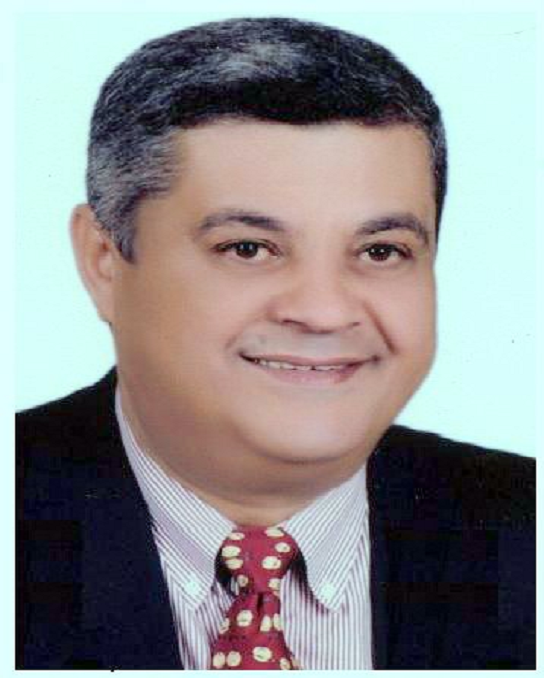Previous Speakers
Conference Information
About the Conference
Cardiac Nursing 2019 regards each one of the individuals to go to the “World Congress on Cardiac Nursing and Cardiology which is to be held on November 4-5, 2019 in Tokyo, Japan which blends Keynote forum, Workshops, Special Sessions, Plenary talk, exhibition, symposiums.
This Congress provides a great platform for experiencing and refreshing your knowledge base amid world-class researchers and scientists. The members will beat the latest advances, improvements and frameworks organization with specialists over the globe. The congregation of this event will be dealt in and around the subject “Advancing into the future of Cardiac Nursing and cardiology"
World Congress on Cardiac Nursing and Cardiology welcome all the Directors, Cardiologists, Cardiac Surgeons, Cardiovascular Surgeon, Thoracic Surgeon, Cardiac Nurses, Heart Failure Nurse, Cardiovascular Technologists, Clinical Cardiac Perfusionist, Cardiology Associations and Societies, Business Professionals, Medical colleges and universities, Professors, Manufacturing Medical Devices Companies , Students to make your presence felt at the conference. Cardiology Congress provides insight into key concepts on recent advances in Cardiac Nursing and Cardiology. Our Congress deliver new ideas, convictions, strategies and tactics that directly affect how you do business. No other Congresses will offer impressive roaster of Keynote speakers, quality attendees, and compelling content. Cardiac Nursing 2019 will provide every attendee with great opportunities to publish research, share the knowledge and enrich your professional network.
Come, attend, explore.
Hope to see you in Tokyo, Japan
Who can attend??
- Directors
- Cardiologists
- Cardiac Surgeons
- Cardiovascular Surgeon
- Thoracic Surgeon
- Cardiac Nurses
- Heart Failure Nurse
- Cardiovascular Technologists
- Clinical Cardiac Perfusionist
- Cardiology Associations and Societies
- Business Professionals
- Medical colleges and universities
- Professors
- Manufacturing Medical Devices Companies
- Students
Why to attend?
This Global conference provides the opportunity for many Professors, doctors, scientists, nurses and researchers from all worldwide to gather and learn the latest advances in the field of cardiac nursing and cardiology and health maintenance and to discuss on scientific ideas and experiences in a special environment.
Cardiac Nursing 2019 Congress is conducted with the aid of OCM’s and the members of Editorial Board of the related supporting Journals and targets to help and support healthcare professionals i.e. cardiologists, surgeons, Clinical Cardiac Perfusionist to give the best care possible to patients with cardiology/cardiovascular diseases.
-
- 2 days of scientific exchange
- 150+ abstracts submitted
- 30+ scientific sessions
- 70+ international expert faculty members
- 80+ healthcare professionals
Why exhibit???
• Branding and marketing opportunity
• Showcase opportunities available in the Indian market and encourage outside universities to collaborate
• Opportunity to sign MoUs with Global Universities and Institutions which are interested in Global Market
• Opportunity to explore tie-ups for research, student and faculty exchange programs, twinning programs, etc
Why Tokyo, Japan?
Tokyo is the capital of Japan for more than a thousand years and it is well known for its commerce, art and high culture during 17th and 18th century. At present, the city of Tokyo has merged with the prefecture of Tokyo to form the "Metropolitan Prefecture" of Tokyo. It is located 227 miles west of Tokyo and 246 miles West south west of Osaka. The "three central wards" of Tokyo – Chiyoda, ChÅ«Å and Minato – are the business core of the city.
Tokyo now has a population of 13 million people in its center and over 38 million including its metropolitan area, making it the largest city in the world. Tokyo is a sophisticated fusion of both the ancient and the modern, an urban environment historic shrines and temples, performing arts, theatres and active environment in trends of fashion, music, art, technology and animation.
Tokyo is the dream destination for many world travelers. It's a one of a kind destination and there's nowhere else like it.
Tokyo is considered as a Most Innovative City as per 2018 studies and the development in the high technology leads Japan into the future. Tokyo has the highest percentage of academics with over 61 universities and 53 research organizations 16 Nobel Prize laureates.
Tokyo’s highlights include The Imperial Palace, The Tokyo Skytree, Sensoji Temple, the city’s Ginza, National Museum of Nature and Science, Ueno Park and Zoo, The Meiji Shrine, authentic Japanese dining in Tokyo and Sushi restaurants. For food lovers, it’s time to explore the culinary capital of the world! There is no better place to begin than “Asakusa for snacks and Sensoji, then onto Kitchen Town.”
The venue for the World Cardiac Nursing and Cardiology congress is Tokyo as per the Suggestions of the Organizing Committee and Editorial Board.
Sessions/Tracks
1. Cardiac Nursing/ Cardiovascular Nursing:
Cardiac nursing is a nursing specialty that works with patients who experience the ill effects of different states of the cardiovascular system. They work for the people who are suffering from coronary artery disease, heart failure, myocardial infarction, etc., under the guidance of a cardiologist at coronary care units (CCU), intensive care units (ICU), operation theatres, Rehabilitation centers, etc. The Job opportunity of such registered nurses is forecasted to grow 15 percent from 2016 to 2026, very much faster than the average for all occupations. The current research in cardiovascular nursing discusses on the Cholesterol estimation which leads to the cardiac problems.
2. Cardiology:
Cardiology is a branch of internal medicine, study and treatment of disorders of the heart and the blood vessels which is diagnosed by a Cardiologist. The diseases which the cardiologist can help are atherosclerosis, atrial fibrillation, arrhythmias, congenital heart disease, coronary heart disease, congestive heart disease, high blood cholesterol and triglycerides, hypertension, pericarditis, ventricular tachycardia, high blood pressure.
According to the U.S. Bureau of Labor Statistics (BLS), the Job Opportunity for the Cardiologist has tremendously grown upto 14% from 2014-2024. That should be an increase in approximately 99,300 positions nationwide. Cardiac Nursing 2019 Congress also discusses the current research of cardiology based on “Diabetes which worsens the outcomes for people with diastolic heart failure”, for which a coordinated care is very much needed.
3. Critical care nursing:
Critical care or ICU nursing is a specialisation of nursing which deals specifically with patients experiencing high-dependency, life –threatening conditions. Critical care nursing can be mentally and physically demanding with long hours (including night shifts), extensive patient handling and high-pressure conditions. Critical care nurses must be able to make sophisticated judgements quickly as patients in ICU are often unstable and can experience rapid physiological decline.
4. Heart disease in Woman:
All women face the threat of heart disease. Although heart disease may often be thought as a problem for men, it is also the most common cause of death for women also. Cardiovascular disease continues to be the leading cause of death among women accounting for ≈1 of every 3 female deaths. According to the current research, by the year 2035, more than 130 million adults in the US population (45.1%) are forecasted to have some form of CVD. Thus, Cardiac Conferences and cardiac Nursing Congress initiates the steps for becoming aware of symptoms and risks unique to women, as well as eating a heart-healthy diet and exercising, which can help protect people especially women.
5. Diabetes, Obesity, Stroke:
Obesity increases the risk of cardiac disease and stroke. It is also the major cause of bile stones, osteoarthritis and many chronic respiratory problems. Obesity closely relates with many health conditions like cardiovascular disease, including high blood pressure, diabetes and abnormal blood cholesterol.After diabetes, a person is said to be at high risk of heart disease and stroke. The affected person can reduce the risk by maintaining blood glucose levels, blood pressure and blood cholesterol levels only with the help of diabetes professionals for good health.
6. Cardiac Amyloidosis:
"Amyloidosis" refers not to a single disease but to a collection of diseases in which a protein-based infiltrate deposits in tissues as beta-pleated sheets. The subtype of the disease is determined by which protein is depositing; although dozens of subtypes have been described, most are incredibly rare or of trivial importance. This analysis will focus on the main systemic forms of amyloidosis, both of which frequently involve the heart. Cardiac amyloidosis is a devastating and progressive disease. Nurses should be aware of the manifestations of cardiac amyloidosis in order to assist in early diagnosis and treatment. Early diagnosis and treatment provide patients with improved outcomes and better quality of life. Familiarity with the initial signs and symptoms and the progression of cardiac amyloidosis is necessary in order to recognize it.
7. Cardio-Oncology:
A thorough understanding of cardio-oncology is very essential for the effective treatment of cancer patients. Virtually all antineoplastic agents are related with cardiotoxicity. All patients who are being considered for chemotherapy, particularly the individuals who have earlier history of heart sickness ought to experience point by point cardiovascular assessment to advance the treatment. Sequential examination of left ventricular systolic function and cardiac biomarkers might also be considered in the selected populations of patient. Cardio-toxic effects of chemotherapy can be decreased by the frequent use of angiotensin-converting inhibitors of enzyme, angiotensin receptor blockers, or beta-blockers. Antiplatelet or anticoagulation therapy may be taken in patients with a potential hyper-coagulable state related with chemotherapy or malignant growth.
8. Pediatric/Geriatric/Sport Cardiology:
A Pediatric Cardiologist is a pediatrician who has earned valuable training in diagnosing and treating kids' cardiovascular problems. Assessment and treatment may start with the foetus, because, heart problems are now been detected before birth. The division of Pediatric Cardiology oversees the conclusion of innate heart abandons, performing indicative techniques, for example, echocardiograms, cardiovascular catheterizations, and electrophysiology examines, and for the on-going administration of the continuation of heart disease in babies, children and adolescents.
9. Hypertension:
Hypertension also known as High blood pressure, can have rarely noticeable symptoms. But if it is untreated, it may increase your risk of serious problems such as heart attacks and strokes. According to the Survey, 1 in 4 adults have high blood pressure in UK. The Normal blood pressure is between 90/60mmHg and 120/80mmHg. This blood pressure puts extra strain on your blood vessels, heart and other organs like brain, kidneys, eyes and it may lead to heart disease, heart attacks, strokes, heart failure, peripheral arterial disease, aortic aneurysms, kidney disease, vascular dementia. It is better to take proper medications regularly in order to control the increase of the Blood pressure.
10. Cardiac Surgery
Coronary artery bypass grafting (CABG) is the most normal kind of heart surgery which supports the blood flow to the heart. Surgeons can make use of CABG to treat people who have critical coronary heart disease (CHD). For the heart to work well, blood should flow in only one direction for which the heart's valves help to make this possible. Healthy valves close and open in a specific way as the heart pumps blood. Every valve has one lot of folds called leaflets. The leaflets open to enable blood to flow from one heart apartment into another or into the arteries. Then the leaflets close tightly to stop the blood from flowing backward. Cardiac surgery is done to fix leaflets that don’t open as wide as they should. This can occur if they become thick or join together. As a result, insufficient blood flows through the valve.
11. Heart Devices:
The Cardiac devices helps the heart to circulate the blood which is used partially or completely to replace the function of a failing heart. The blooming of these wireless heart monitors marks a new era in medicine and and the evolutionary growth from healthcare to population levels where appropriate patients are equipped with advanced biosensors having their data processed by sophisticated prediction algorithms will happen. Pacemakers, cardioverter defibrillators, Cardiac Loop Recorder are cardiac devices used to treat heart disease.
12. Consultants Cardiology:
13. Cardiac Pharmacology:
Cardiovascular pharmacology deals with the medications which helps in the treatment of heart disease. Cardiac medications are used to treat the cardiac, circulatory and vascular system and various cardiovascular agents that are available to treat various cardiovascular conditions. There are 6 associations and societies and the main association for cardiology medical agents in the US and 50 universities work on cardiac medications. Recently, three new drugs were introduced in 2015 and many medications are yet to be introduced in the nearby future. In this era, cardiovascular drugs which is available at the market includes cardiac glycosides, anticoagulants, antiarrhythmic agents, anti-anginal agents and antihypertensive agents.
14. Cardiomyopathy:
- Nearly 40% of children who are diagnosed with cardiomyopathies that produce symptoms receive a heart transplant or die within the first two years after diagnosis.
- The percentage of children with cardiomyopathy who received a heart transplant has not declined over the past 10 years.
- Cardiomyopathy remains the leading cause of transplantation for children over one year of age.
15. Cardiology-Future Medicine:
Cardiology is a branch of medicine which deals with disorders of the heart and the other parts of the circulatory system. This field includes medical diagnosis and treatment of coronary artery disease, heart failure, valvular heart disease and electrophysiology. It is likely that there will be continuing sub specialization in the tracking of technical expertise and clinical excellence in the field of cardiology. This situation will at first both aggravate the rapid increase of costs and reinforce the workforce shortage.
16. Case Reports on Cardiology:
Heart is a most important muscle organ in humans and animals to pump blood through the blood vessels of the circulatory system. Medications that are used to treat other disorders in the body might show a great effect on the heart and cause various side effects. Therefore, case reports of cardiac arrest and its disease are very important in the development of treatment strategies. Cardiology conferences, cardiac nursing conferences are very important for ordinary people to be aware of the most important part of the human body, the Heart.
17. Current Research on Cardiology:
Advances in medicine means that if CHD is detected at an early stage it can be treated successfully to extend the survival rate. Successful treatment is more likely considered if the disease is detected at its earliest stage. Our current research focuses on the early detection of CHD in order to hold or reverse the progress of the disease. The ongoing research work includes the use of scanning of the heart in the early diagnosis of heart disease in diabetics, Development of Nuclear Cardiology techniques for the detection, Drug development and evaluation of treatments, Identification of novel biological markers to predict the presence of heart disease, Analysis of ethnic and socio-economic differences in heart disease.
Related Societies and Associations :
USA:
The American Society for Preventive Cardiology; American Society of Nuclear Cardiology; American Heart Association; ACC; American Stroke Association; Society for Cardiovascular Angiography and Interventions; Arizona Society of Echocardiography; Brazilian Society of Cardiology; Heart Failure Society of America; American College of Cardiology, Georgian Society of Cardiology, Association of Cardiovascular Prevention and Rehabilitation; Elsevier Society Partners in Cardiology; American Society for Preventive Cardiology; American Society of Echocardiography; American Society of Hypertension; Brazilian Society of Hypertension; Canadian Cardiovascular Society; Argentine Society of Cardiology; Canadian Association of Interventional Cardiology ; Congenital Cardiac Anaesthesia Society; The American Association of Cardiovascular and Pulmonary Rehabilitation; Vascular and Endovascular Surgery Society, American College of Cardiology ; Georgian Society of Cardiology; Hellenic Society of Cardiology; Icelandic Society of Cardiology; International Society for Vascular Surgery, Irish Cardiac Society; Kosovo Society of Cardiology ; Lithuanian Society of Cardiology; Luxembourg Society of Cardiology, Maltese Cardiac Society; Moldavian Society of Cardiology, Montenegro Society of Cardiology ; Moroccan Society of Cardiology, Norwegian Society of Cardiology; Polish Cardiac Society; Portuguese Society of Cardiology; San Marino Society of Cardiology; Slovak Society of Cardiology; Slovenian Society of Cardiology; Spanish Heart Foundation; Swedish Society of Cardiology; Swiss Society of Cardiology; World Health Organization, World Heart Federation
Europe & UK:
European Society of Cardiology; British Cardiovascular Society; British Association for Cardiovascular Prevention and Rehabilitation; World Heart Failure Society; Austrian Heart Foundation; Austrian Society of Cardiology; Belgian Society of Cardiology; Spanish Society of Cardiology; British Cardiac Society; International Academy of Cardiology; British Heart Foundation; British Hypertension Society; British Junior Cardiologists Association; Croatian Cardiac Society; European Society of Cardiology; British cardiology society; Luxembourg Society of Cardiology; British Heart Failure Society; Association of Cardiologists of Bosnia & Herzegovina; British Heart Foundation; Spanish Heart Foundation; Austrian Heart Foundation; Belorussian Scientific Society of Cardiologists.
Middle-East:
Algerian Society of Hypertension, Russian Society of Cardiology, Armenian Cardiologists Association, Saudi Heart Association, Turkish Society of Cardiology, Emirates Cardiac Society, Egyptian Cardiology Society, Iranian Heart Association
Asia Pacific:
Asian Pacific Society of Cardiology; Japanese Circulation Society ; Cardiac Society of Australia & New Zealand; Japanese Heart Failure Society; Japanese Society of Echocardiography;World Society of Cardiovascular & Thoracic Surgeons; Asian Pacific Society of Hypertension; Association of Cardiologists of Kazakhstan; Australian Cardiovascular Health and Rehabilitation Association; Association of Thoracic and Cardiovascular Surgeons of Asia; Chinese Society of Cardiology; Philippine Heart Association; Pan-African Society of Cardiology; Association of Pediatric Cardiology; Cardiological Society of India; Asian Society of Cardiovascular Imaging; Association of Black Cardiologists; Interventional Cardiovascular Society of Malaysia; Israeli Cardiology and Critical Care Nursing Society; Japanese Society of Thoracic Radiology; Korean Society for Thoracic and Cardiovascular Surgery; Kyrgyz Society of Cardiology; Lebanese Society of Cardiology; Heart foundation of Malaysia; Japanese Society of Hypertension.
Market Analysis | Cardiac Nursing 2019 | Tokyo
Japan's market for medical devices and materials continues to be one among the world's largest. According to the Ministry of Health, Labour and Welfare in 2017, Japanese market for medical devices and materials was approximately $26.4 billion. The demand for the medical devices in Japan, is expected to increase abundantly.
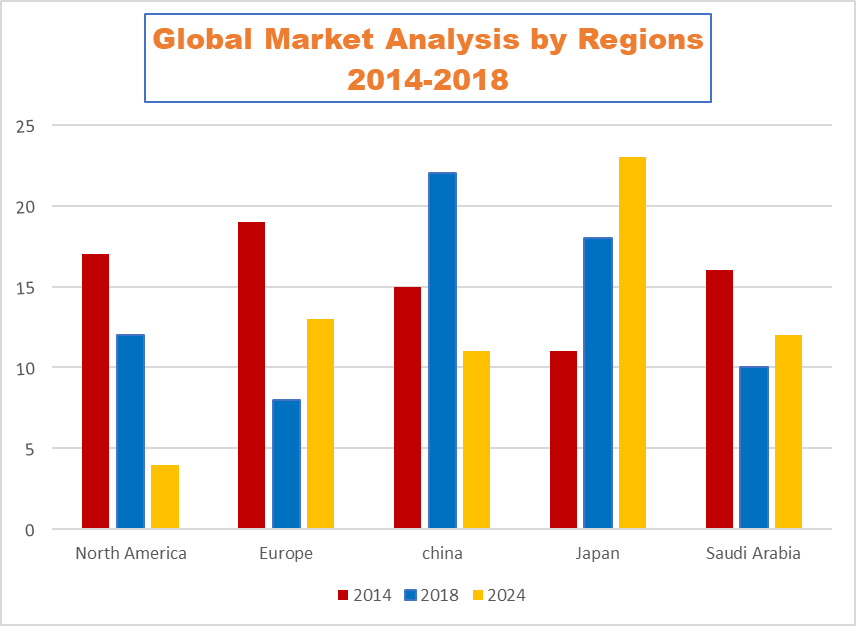
The overall Japanese market for interventional cardiology devices is blooming at a rate of 1.3%, which will help the 2017 market value of ¥151,896 up to ¥166,789 by 2024. According to the latest WHO data published in 2017 Coronary Heart Disease Deaths in Japan reached upto 14.51% of total death and its stands #182 position in the World Rank.

Cardiology Hospitals at Japan:
- Tokyo Metropolitan Health & Medical Information Center
- Japan Red Cross Hospital (Nihon Sekijyuji Byoin)
- International University of Health and Welfare Mita Hospital
- National Cardiovascular Center (Kokuritsu Junkankibyo Senta)
- Jutendo University Hospital
- Osaka Central Hospital (Osaka Chuo Byoin)
- Keio University Hospital
- Osaka University Hospital (Handai Byoin)
- Kanazawa Medical Association
- Sumitomo Hospital
- Sakakibara Heart Institute
- Yodogawa Christian Hospital
- St Luke's International Hospital
- Nagoya University Hospital
- Seibo International Catholic Hospital
- Japanese Red Cross Daiichi Hospital
- Tokai University Tokyo Hospital
- Hokkaido University Hospital
- Toranomon Hospital
- Hokuto Hospital
- University of Tokyo Hospital
- Fukuoka University Hospital
- Japan Baptist Hospital
- Hiroshima University Hospital
- Kosei Nenkin Hospital
- University of Tsukuba Hospital
- Nagasaki University Hospital
- Juntendo University Hospital
List of Cardiology Hospitals at Tokyo:
- Osaki Hospital Tokyo Heart Center
- Sakakibara Heart Institute
- St. Luke's International Hospital
- Ikegami General Hospital
- Sanno Hospital
- The Cardiovascular Institute Hospital Tokyo
- National Hospital Organization
- National Cardiovascular Center
Funding Agency of Japan:
- Hokkaido University
- Japan Science and Technology Agency
- Keio University
- Kyushu University
- Molecular Dynamics for Antibody Drug Development Alliance Cooperation
- National Institute of Advanced Industrial Science and Technology
- National Institute of Informatics
- New Energy and Industrial Technology Development Organization
- Osaka University
- Photonics Electronics Technology Research Association
- RIKEN
- The University of Tokyo
- Tohoku University
- Tokyo Institute of Technology
- University of Tsukuba







